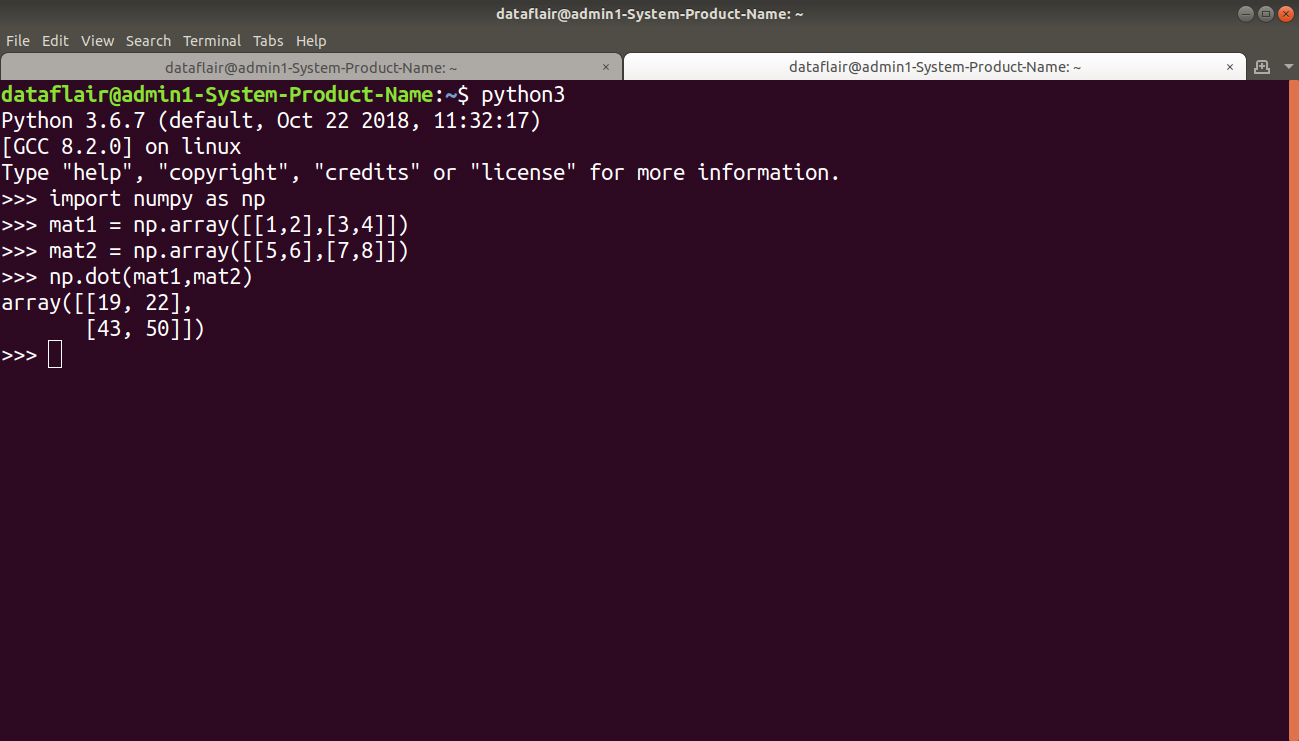Top Python Math Libraries – Solve your math problems quickly
Python course with 57 real-time projects - Learn Python
Are you afraid of maths? Have you ever tried to solve your mathematics problems with the help of technology?
I am sure your answer will be NO! Don’t be shocked, now it is possible to solve all your mathematics problems with the help of Python technology.
So, today DataFlair came with Python math article, in this, we will discuss how Python can be used for implementing various mathematical operations.
Python is a versatile language that has various applications in the field of data science, web development and scientific computing.
We will see how Python has impacted scientific computing with its robust mathematical libraries.
So, let’s start the tutorial and explore top Python math libraries.
What is Maths for Python?
Python has become highly popular due to its abundance of libraries. Each Python library is application-oriented that was developed to address problems.
Mathematical operations are most preferably carried out in Python due to its focus on utility and minimal programming jargon.
There are several libraries that can be used to carry out mathematical operations with Python.
What is Python Math Library?
Following are several Python math libraries –
1. Math
This is the most basic math module that is available in Python. It covers basic mathematical operations like sum, exponential, modulus, etc.
This library is not useful when dealing with complex mathematical operations like multiplication of matrices.
The calculations performed with the functions of the python math library are also much slower.
However, this library is adequate when you have to carry out basic mathematical operations.
For example: You can carry out the exponential of 3 using the exp() function of python math library as follows:
>>> from math import exp >>> exp(3) #Calculates Exponential
Output
2. Numpy
The numpy library in Python is most widely used for carrying out mathematical operations that involve matrices.
The most important feature of numpy that sets it apart from other libraries is its ability to perform lightning speed calculations.
This is possible due to the C-API that allows the user to obtain fast results.
For example, you can implement the dot product of two matrices as follows –
>>> import numpy as np
>>> mat1 = np.array([[1,2],[3,4]])
>>> mat2 = np.array([[5,6],[7,8]])
>>> np.dot(mat1,mat2)
array([[19, 22],
[43, 50]])3. SciPy
This python math library provides all the scientific tools for Python. It contains various models for mathematical optimization, linear algebra, Fourier Transforms, etc.
The numpy module provides the basic data structure of array to the SciPy library.
For example
We will use the linalg() function provided to us by the SciPy library to calculate the determinant of a square matrix.
>>> from scipy import linalg >>> import numpy as np >>> mat1 = np.array([[1,2],[3,4]]) #DataFlair >>> linalg.det(mat1) -2.0
Output
4. Statsmodel
With the help of this package, you can carry out statistical computations that involve descriptive statistics, inference as well as estimation for the various statistical models.
It facilitates efficient statistical exploration of data.
Following is an example of the implementation of the Statsmodel library in Python –
>>> import numpy as np
>>> import statsmodels.api as sm
>>> import statsmodels.formula.api as smf
>>> input_data = sm.datasets.get_rdataset("Guerry", "HistData").data
>>> #Fitting the Regression Model
... res = smf.ols('Lottery ~ Literacy + np.log(Pop1831)', data = input_data).fit()
>>> print(res.summary())Output
5. Scikit-learn
Machine Learning is an important Mathematical aspect of Data Science. Using the various machine learning tools, you can easily classify data and predict the outcomes.
For this purpose, Scikit-learn offers various functions to facilitate easy classification, regression, and clustering techniques.
>>> from sklearn import linear_model >>> regress = linear_model.LinearRegression() >>> regress.fit([[0,0],[1,1],[2,2]], [0,1,2]) LinearRegression(copy_X=True, fit_intercept=True, n_jobs=None, normalize=False) >>> regress.coef_ array([0.5, 0.5])
Output
Python Interview Questions on Math Library
- What is Math Library in Python?
- How do you access the Math library in Python?
- Is Math library, a built-in library in Python?
- What is the purpose for using Python math library?
- Name several math libraries for Python.
Conclusion
In this python math article, we had a look at some of the important Python math library. We went through the basic python math library, NumPy, SciPy, statsmodels as well as scikit-learn.
There are many more libraries for Mathematical operations in Python and many more are under development.
We hope that you enjoyed reading this article and ready to implement these concepts for your math problems.
Try to apply the above python math concepts in the project. Here are the top python projects which you can practice for free.
Waiting for your feedback in the comment section.
Did you know we work 24x7 to provide you best tutorials
Please encourage us - write a review on Google







its realy helpull for me
Hello Govinda,
We are happy to help you. Refer to our sidebar for more Python tutorials.
Thankyou dataflair
thanks.it is a very nice article .